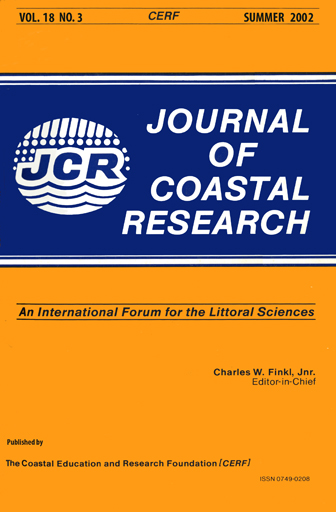Short Term Coastal Changes Along Damietta-Port Said Coast Northeast of the Nile Delta, Egypt
Keywords:
Nile Delta, coastline, erosion, Damictta, Port Said, satellite imagesAbstract
Landsat Thematic Mapper images (TM) covered the coastline between Damietta and Port Said, taken at intervals in 1984, 1987 and 1991, were used to detect shoreline changes. When combined with geomorphological and sedimentological data, the remote sensing data enable the classification of the coastline into five segments, based on whether erosional or depositional process domains dominate them. Although the 30m spatial resolution of the satellite TM data precludes precise calculation of rates of change, they do enable erosional and accretionary coast line segments of the Damietta Port Said coast to be recognised over these time scales. Segments 1 and 2 are erosional with an average shoreline recession of - 41.4m yr-1, and -19.3m yr-1 respectively. Segment 3, Damietta spit, is an accretionary segment with an average shoreline advance of 81.4 m yr-1. Segment 4, El-Deiba, experienced erosion in the period 1984-1987, with an average shore line recession of -17m yr-1, but appears to have been stable over most of its length during the period 1987- 1991, with observed declaration in the rate of shoreline recession to be -2.5m yr-1 . Segment 5, El-Gamiel, was stable during the period 1984-1987, but due to the construction of projecting jetties around the mouth of the inlet and the subsequent interruption of the sediment transport supply, the coastline became accretionary updrift of the inlet (west ) and erosional downdrift (east). Granulometric and heavy mineral analyses show significant differences between beach face sediment samples collected from the different coastline segments. The erosional segments are characterised by coarser sands and high concentrations of heavy minerals; while the accretionary segments are composed of finer sands with lower concentrations of heavy minerals. Poor coastal management strategies and the shortage of data on geomorphological processes along the coast has resulted in constructions taking place a long sections of erosional coastline, requiring subsequent expensive defence measures. Moreover, these results have implication for future development on onshore facilities after the recent discovery of oil and gas reserves offshore.


